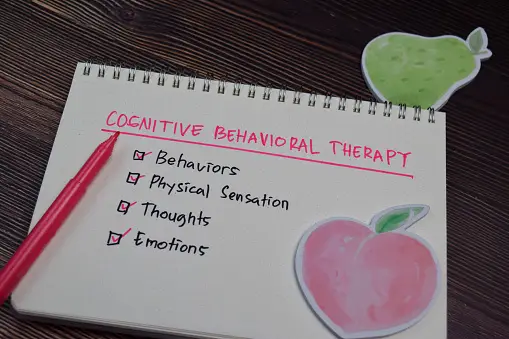Have you ever had a strong feeling for someone that you find it so hard to do without the person? You can’t just fathom how the person’s image keeps flashing through your eyes and you want to be in the arms of the person, even if the person is not reciprocating that feelings.
You might think this is love when in the real sense it’s not; it’s limerence. Limerence is a powerful state of mind where you experience intense romantic infatuation for the limerent object (LO)
It’s a state where you’re willing to go to great lengths to win their favor, be near them, and make them notice you. It’s a kind of love that defies reason and sometimes defies logic, but it’s a feeling that has driven people to great romantic heights.
With this feeling, you should know there’s a great difference between love and limerence.
I’m sure you want to know more about what limerence is. So, join us on this enchanting journey as we explain in detail the meaning, signs, effects, and ways to manage Limerence.
By the end of this blog post, you will have a deeper understanding of what limerence is.
Let’s dive right in!
Limerence Meaning
The term Limerence refers to a profound romantic infatuation characterized by intense emotional arousal, the desire to have one’s feelings reciprocated, and obsessive and intrusive thoughts about a limerent object (LO).
Limerence was a term coined by psychologist Dorothy Tennov in 1979 for her book, Love and Limerence: The Experience of Being In Love.
Dorothy Tennov coined the term “limerence” to describe a specific type of emotional and psychological state that she observed in some individuals who were deeply infatuated or obsessed with another person.

The person experiencing limerence is often called a limerent. The limerent individual goes through an involuntary state of intense desire for the limerent object, who is a potential sexual partner. This infatuation can lead to intrusive thoughts, heart palpitations, and a dopamine rush, making it different from ordinary romantic love.
Limerence often begins like real love where you get attracted to the limerent object either by “love at first sight” or you see something in that person that makes you love him/her.

Tennov noted in her study that the limerent person will always crave for attention from the limerent object and want to stay attached to it at all times.
When you’re experiencing limerence you won’t want to stop thinking about the limerent object (LO). Even when your mind is preoccupied with something else, there’s still space available to think about your object of attraction.
Also, the limerent person is always after reciprocation of feelings. They feel rejected whenever the LO does not reciprocate the love they show.
Limerence is entirely different from genuine love. If a person is experiencing limerence, he/she won’t be able to maintain a healthy relationship. Though it’s not harmful; if it’s not properly taken care of it can have negative effects on a person’s wellbeing.
Difference Between Limerence and Love
Love and limerence are two different feelings. They might start with the same stage of attraction to the object of interest but in the long run, you’ll realize they’re extremely different.
While both involve deep feelings and connections, they exhibit significant differences in terms of intensity, reciprocation, and the impact on one’s mental and emotional health.
Love is a profound feeling of genuine connection, attachment, and relationship. It comes in various forms which can be: familial, platonic, or romantic love.
Love is an emotional feeling for someone that’s often accompanied by a deep sense of care and compassion. Also, it develops gradually. You don’t rush love and pressure your partner to show love in return.

On the other hand, limerence represents a more specific and intense experience. The limerent experiences intrusive and obsessive thoughts about the limerent object. These thoughts often border on the obsessive-compulsive, consuming their day-to-day activities. Limerence is characterized by intense emotional arousal, including heart palpitations when thinking about the LO.
Psychologist Dorothy Tennov noted that limerence can be overwhelmingly one-sided, with the limerent person feeling anxious and fixated on the limerent object’s every detail.
Limerence often leads to obsessive attachment, and the person may struggle with challenging intimate boundaries, sometimes crossing into unhealthy territory. Tennov describes it as an involuntary state of intrusive thinking about another person. It can be all-consuming and disruptive, negatively impacting one’s life and relationship with other people.
Love, in contrast, tends to develop over time, allowing for a deeper understanding of the other person’s flaws and a more balanced perspective. It is more sustainable and promotes a sense of general well-being. In love, the focus shifts from an idealized, unobtainable version of the other person to a real and nuanced understanding of their character. This allows for a more stable and committed relationship, where both individuals are on equal footing and share in the emotional and practical aspects of life.
Limerence can be characterized by an intense rush of dopamine when in the presence of the limerent object. This chemical reaction contributes to obsessive thinking and the fixation on the person of interest. On the contrary, love, while capable of creating moments of intense emotional arousal, is generally a more balanced and sustainable state of the mind. If it’s genuine love, you will be calm if you’re with your partner.

A critical point to consider is the impact of limerence on one’s mental state. The limerent individual may find themselves cutting ties with friends and family members or neglecting their own needs in pursuit of the limerent object’s attention. This unhealthy obsession can resemble a mental state akin to obsessive-compulsive disorder.
Let’s also differentiate the terms limerence and love using the attachment theory. Love often aligns with secure attachment, where individuals feel safe and valued in their relationships. In a secure attachment, there is room for personal growth and pursuit of one’s own needs while maintaining a deep connection with a partner. Limerence, on the other hand, tends to align more with anxious or avoidant attachment styles, leading to a constant need for reassurance and potentially pushing the limerent person into unhealthy patterns.
It’s crucial to acknowledge that both love and limerence have a place in the complex landscape of human relationships. The key lies in recognizing these emotions, understanding their impact, and seeking the help of a therapist when they become overwhelming or detrimental to one’s health.

Love is a multifaceted and stable emotion that can develop over time, fostering deep connections and emotional reciprocity. Conversely, limerence is an intense and often one-sided infatuation marked by obsessive thinking, intrusive thoughts, and an unobtainable nature.
The Dark Side of Limerence: Obsession and Compulsion
Limerence, with its intense and all-consuming infatuation, is often seen as a beautiful and passionate experience. However, like many intense emotions, it has a darker side. This darker side involves obsession and compulsion, which can manifest in a few significant ways.
Obsession in Limerence: Obsession in the context of limerence refers to the overwhelming, intrusive thoughts and preoccupation with the limerent object—the person you are infatuated with. These thoughts can be relentless and all-encompassing, making it challenging to focus on anything else in your life.

For instance, you might constantly think about the limerent object, replaying interactions, analyzing their words and actions, and imagining scenarios where you’re together. These thoughts can be so intense that they start to interfere with your daily functioning and overall health.
Compulsion in Limerence: Compulsion in limerence involves engaging in repetitive behaviors or actions related to your infatuation. These behaviors are driven by a deep desire to gain the attention or favor of the limerent object or to reduce the anxiety and distress that often come with limerence.
Some common limerence-related compulsions may include repeatedly checking for messages from the LO, constantly seeking opportunities to be in their presence, or trying to find out more about their life and interests through social media or other means.

While limerence can be a beautiful and exhilarating experience, the dark side characterized by obsession and compulsion can have negative consequences. It can lead to emotional turmoil, unhealthy attachment, social isolation, and neglect of other areas of life.
Therefore, it’s essential to recognize the presence of obsession and compulsion in limerence and take steps to find a healthy balance.
The Role of Fantasy in Limerence
Fantasy plays a significant role in limerence, and it’s one of the distinguishing features of this intense emotional state. Here’s how fantasy is intertwined with limerence:
Idealization: In limerence, individuals often create an idealized image of the person they’re infatuated with. This idealization involves seeing the limerent object as perfect, flawless, and possessing qualities that may not necessarily reflect reality. Fantasy allows limerent individuals to maintain this idealized image, even when faced with evidence to the contrary.
You start to fantasize that the limerent object is the best for you. Irrespective of what anyone says or flaws you see, you’ll still want that person to yourself.
Daydreaming: Limerent individuals frequently engage in daydreams or fantasies about their love interest. These daydreams can be highly detailed and vivid, involving scenarios where they imagine the two of them together in various romantic or idealized situations.
You start to imagine you’re with the person and enjoying life together. You can even imagine yourself in another world with the object of interest.
These fantasies provide a feeling of emotional fulfillment and satisfaction, even if they aren’t grounded in reality.

Escapism: Fantasy serves as a form of escapism for limerent individuals. It allows them to escape from the challenges and stresses of their everyday lives into a world of romantic possibilities. This escapism can be a source of comfort and relief from life’s difficulties.
Fantasy as a Coping Mechanism: Limerent individuals often use fantasies as a coping mechanism for managing the emotional highs and lows associated with limerence. When they’re unable to be with the person they desire, fantasy provides a way to experience a feeling of connection and fulfillment, albeit in their imagination.
Rehearsing Interactions: Limerent individuals may replay and rehearse interactions with the limerent object in their fantasies.
These mental rehearsals can help them imagine what they’d say or do in various scenarios, providing a feeling of control over the situation.
Intensity and Longing: The fantasies in limerence can be highly intense and driven by a deep sense of longing. They amplify the emotional intensity of limerence, making the experience even more overwhelming and all-consuming.
How to Recognize if You’re a Limerent Person
Recognizing the signs of limerence in a person is an essential step to understanding your true emotions. Here are common signs that someone is limerent:

- Constant Thoughts About the Limerent Object
A limerent person thinks obsessively about the object of attraction, often to the point where they become distracted from their other responsibilities. These intrusive thoughts can occur at any time of the day, making it difficult for the limerent person to focus and stay productive.
You know you’re a limerent person when you start to see the object of attraction as a perfect individual with no flaws. You so much idealize the person and overlook his/her flaws and imperfections.
You also tend to overanalyze everything, including your daily interaction or communication with the person of interest. You often see another meaning to the limerent object’s words or gestures.
Another way to know you’re experiencing limerence is that you daydream a lot. You daydream about scenarios where you and the limerent object are together. Sometimes, these daydreams look so real that you won’t want to come back from that wonderland.
- Desire for Emotional Reciprocation
Limerent individuals experience intense emotional highs and lows related to the limerent object. They may feel elated when the limerent object reciprocates their feelings but feel unhappy when they notice rejection.
- Need for Constant Attention
Limerent individuals may seek constant attention or validation from the limerent object to ease their anxiety.

You might be willing to make significant sacrifices or changes in your life to be closer to the limerent object, even if it’s not practical.
In some cases, limerent individuals stalk the person they’re infatuated with. They sometimes go through the LO’s social media pages or lurk around the person’s house if they stay close to each other.
- Jealousy and Possessiveness
There’s this feeling of jealousy that arises whenever the limerent person sees the object of attraction talking to someone else. Even in a non-romantic context, they still feel insecure and over-possessive.

- Imagining a Shared Future
Limerent individuals frequently fantasize about having a future with the limerent object. They imagine spending the rest of their life together even when there’s no mutual connection between them yet.
- Neglecting Other Relationship
A limerent person may neglect or distance himself/herself from a healthy relationship with another person, including friends and family, due to their intense focus on the limerent object.
Limerence can make you neglect yourself because you tend to prioritize the limerent object’s needs and desires.
- Difficulty in Cutting Ties
You find it hard to break ties with the limerent object even when you know it’s for both parties’ best interest.
You’ll know you’re experiencing limerence when you feel anxious in the presence of the limerent object. Your heart starts to palpitate, your breathing becomes very fast, you either stutter or don’t speak at all or you sweat.

Stages of Limerence
Limerence is a complex condition that goes beyond the normal romantic feeling of interest toward another person. There are three stages of limerence – Infatuation, Crystallization, and Deterioration
Infatuation
Infatuation is the first stage of falling in love. For an actual relationship, the infatuation stage is where you know more about your partner. During this phase, you weigh the pros and cons and decide to stay with the person.
But for limerence, this phase is marked by idealization, where the limerent person sees the object of their affection as a perfect individual having no flaws.
When a limerent individual sees red flags in the limerent object, they’ll ignore the flags and go ahead with the relationship. During this limerence phase, you don’t want to know who the limerent object is, you only want to direct your emotions to the things you can see physically.

Crystallization
The second stage is the crystallization stage. In this stage of limerence, the limerent individual already has strong feelings towards the object. You start seeing the limerent object through a filter of your desires. You don’t care about who the person is inside; all you care about is what attracted you to the person in the first place.
You start fantasizing about the limerent object and crave the reciprocation of your feelings.
During this second stage of limerence, you’re afraid of losing your partner. You become so in love with the limerent object that you can’t do without them.

Deterioration
The deterioration stage of limerence can occur when the limerent person realizes that their feelings may not be reciprocated, or they become aware of the limerent object’s flaws.
In this limerence phase, what you saw in the person that got you attracted to him/her is no longer there. You no longer see a reason to push the relationship further; it’s becoming tiring and overbearing. Instead of the relationship waxing stronger, it starts to fall apart.
This can lead to anxiety, heartache, and a struggle to cut ties with the limerent object. Eventually, you’ll become frustrated and disappointed.

How long does limerence last
How long limerence lasts varies significantly from one person to another. It’s an emotional state, so it’s sometimes determined by the limerent person’s ability to let go easily.
According to Tennov, limerence sometimes lasts for a few weeks or several decades, Some people experience it for a short period while others experience it much longer.
Several factors that can influence the duration of limerence are:
- Intense Feelings: The more intense the limerent individual’s feeling is, the longer the period of limerence. If the deep obsession and emotional arousal persist, there’s no end to this experience.
- Reciprocation: Limerence is most times about reciprocation. If the limerent person notices that the LO is reciprocating his/her feelings, then the relationship can continue, But if there’s no reciprocation, the duration might reduce.
- Limerent Object’s Availability: The availability of the limerent object also has a great influence on the duration. If both parties keep seeing each other frequently, the duration of the limerence may extend.
- External Circumstances: Some life events are bound to happen, such as a change in location. If either party changes location or becomes a victim of one circumstance or the other, it can sometimes reduce the duration of limerence.
Effects of Limerence

Limerence can affect a person psychologically and physically. Some of the effects of limerence are explained below.
The psychological effects of limerence are, but are not limited to the following:
- Obsessive Thinking: Limerent individuals tend to have intrusive and persistent thoughts about the person they are infatuated with. These thoughts can be all-consuming, making it difficult to concentrate on other aspects of life.

- Heightened Emotional Arousal: Limerence is characterized by intense emotional arousal. Limerent individuals experience a wide range of emotions, from euphoria and elation when thinking about the limerent object to feeling anxious and despair when faced with uncertainty or rejection.
- Insecurity: Limerence often brings about insecurity. Limerent individuals may be concerned about whether their feelings are reciprocated or whether they are “good enough” for the limerent object.
- One-Sided Love: Limerence typically involves a one-sided relationship or romantic feeling. The limerent person’s feelings are usually not reciprocated by the limerent object, leading to feelings of unrequited love and frustration.
- Anxiety: A limerent is always anxious whenever he thinks of or is around the limerent object. This feeling of anxiety leads to sweating, fast breathing, awkwardness, stuttering or not speaking at all.

- Desire for Emotional Reciprocation: Limerent individuals usually yearn for reciprocation from the limerent object. They long for a deep, mutual connection and a romantic relationship with the object of their affection.
- Impact on Self-Esteem: The one-sided nature of limerence can lead to a decrease in self-esteem. Limerent individuals may feel unworthy of the limerent object’s attention, which can negatively affect their self-love and self-worth.
- Challenging Intimate Boundaries: Limerence can challenge intimate boundaries in existing relationships, causing discomfort or strain in relationships with friends, family members, or other loved ones.
The physical effects include:
- Dopamine Rush: The presence of the limerent object or even the mere thought of them can trigger a surge in dopamine, a neurotransmitter associated with pleasure and reward. This can result in a “high” feeling and heightened physiological arousal.
- Heart Palpitations: Limerence can lead to increased heart rate and other physical symptoms related to heightened emotional states. The limerent person may feel their heart race when encountering or thinking about the limerent object.
- Sexual Attraction and Fantasies: Feeling a strong sense of sexual attraction to the limerent object is often a sign of limerence. Sexual fantasies about the person can be intense and frequent, contributing to the overall emotional intensity.
Limerence and Mental Health
Limerence can significantly impact an individual’s mental health. When you find yourself in an unpleasant limerence state, you’ll often experience a wide range of intense and sometimes conflicting emotions. These emotions can be so overwhelming that they begin to affect your mental health.
Limerence begins to affect your mental health when the obsessive thoughts of the limerent object interfere with your ability to focus on other aspects of life, causing you distress.
Limerence can bring about a heightened sense of anxiety. Worries about whether the feelings will be reciprocated, fears of rejection, or concerns about maintaining the limerence relationship can lead to anxiety disorders or exacerbate existing ones.

Limerent individuals may withdraw from friends and family as they focus on their infatuation. This social isolation can lead to feelings of loneliness and contribute to mental health issues.
Lack of reciprocation or rejection can lead to a decline in self-esteem and self-worth, making limerent individuals vulnerable to self-criticism and negative self-talk.
Some individuals also resort to unhealthy coping mechanisms, such as alcohol or substance abuse, to manage the intense emotions associated with limerence.
When you start to recognize the impact of limerence on your mental health, it can help you seek the appropriate support and coping strategies to navigate these emotional challenges.
Can Limerence Be Healthy or Harmful?
Limerence, in itself, is neither healthy nor harmful as it varies from person to person. The outcome of limerence depends on how individuals manage it. 
Healthy Limerence: In some cases, limerence can serve as a catalyst for individual growth. If the person you’re obsessed with is doing great things, you’ll also want to follow that path because you won’t want to be below standards. This will inspire you to become the best version of yourself, hereby leading to self-improvement, high self-esteem, and a new zeal for life.
Therefore, if limerence is properly managed and does not lead to harmful actions or obsessions, it can be termed as a positive experience.

Harmful Limerence: Limerence can be detrimental to individual lives if it results in obsessive behaviors.
Limerence is also harmful if it jeopardizes your relationship with friends and family. The harm can also affect your mental health as it may lead to depression, anxiety, and other mental health issues.
Whether limerence is healthy or harmful often depends on how individuals manage and respond to it. That’s why you need to seek professional guidance or support from your trusted friends and families.
Limerence and the Brain
Limerence isn’t just an emotional experience; it also has a neurobiological basis. The brain also has a role to play in limerence.
One of the key neurotransmitters involved in limerence is dopamine. When a person is in the presence or even just thinking about the limerent object, the brain releases large amounts of dopamine, a chemical associated with pleasure and reward. This creates the euphoric feeling that limerent individuals often describe.
Limerence also involves mirror neurons, which are responsible for our ability to empathize with others. These neurons fire when we see someone we’re attracted to, intensifying the desire for connection.

Interestingly, limerence can also lead to heightened stress and anxiety, in part due to the constant state of longing and uncertainty. This stress can reduce serotonin levels in the brain, which is linked to feelings of obsession and anxiety.
How Limerence Affects Relationships
It has been said previously that limerence has a great impact on relationships with others, like friends and families. Let’s take a look at how it affects these relationships:

- Intensity of Emotions: A person experiencing limerence has a general intensity of feelings. It can lead to heightened passion and romantic feelings within the limerent relationship. This makes the limerent person believe they’ve found their soulmate or the one for them.
- Strain on Existing Relationships: Limerence can create gaps within friends and families. The limerent person can be emotionally and physically distant from their existing relationships.
- Risk of Obsession: In some cases, limerence can lead to an unhealthy obsession. The limerent person often stalks the limerent object both online and offline which can be damaging to the object of affection.
- One-Sided Relationship: In many limerence scenarios, the feelings are not reciprocated by the limerent object. And when the feelings are not reciprocated, it can result in unrequited love, causing emotional pain and distress for the limerent individual.
- Long-Term Impact: Limerence can be for a short or long time. If it’s not properly managed, it can lead to breakdown and emotional scars in relationships.
Common Triggers of Limerence
Limerence doesn’t just occur, some things trigger the feelings. Taking time to understand these triggers can help you navigate the experiences.

- Closeness and Familiarity: One of the most common triggers of limerence is spending time close to the limerent object. When you frequently interact with each other you start to develop feelings of sexual attraction and connection, especially if the object of attraction is friendly and approachable.
- Shared Interests or Goals: It’s normal to stay close with someone you share common interests, goals, and values with because you tend to see that person as having a like-mind with you. When you share the same goals as the limerent object, you’re prone to be attached and attracted to the person.
- Admiration of Qualities: If someone possesses qualities or characteristics that you deeply admire, it can trigger limerence. This admiration may include physical attractiveness, intelligence, humor, kindness, or other traits that resonate with your own values and desires.
- Emotional Vulnerability: Sometimes, when you’re going through challenging times or feeling emotionally vulnerable, you may be more susceptible to limerence. The person who provides you with emotional support during such times can become the focus of intense feelings.
- Reciprocation of Interest: When the person you’re interested in reciprocates or shows interest in return, it can intensify limerence. This creates a cycle of mutual attraction, further fueling infatuation.
- Unmet Needs or Dissatisfaction: Limerence sometimes arises when there are unmet emotional or psychological needs in a person’s life. The limerent object may symbolize the fulfillment of these needs, leading to intense attraction.
- Personal Similarities or Differences: Both similarities and differences can trigger limerence. A person who shares many similarities may feel like a kindred spirit, while someone with contrasting qualities might be seen as exciting.
- Past Experiences: Past experiences, particularly unresolved relationships or unrequited loves, can trigger limerence when a new person exhibits qualities reminiscent of past LOs.
Limerence and Attachment Styles
Attachment styles can be defined as the emotional and behavioral patterns individuals develop during their early relationships with caregivers. These relationships be it pleasant or unpleasant have a great influence on their relationship with others later in life.
Attachment styles have a lot to do with how people connect or bond together, especially in romantic relationships.
Attachment theory was introduced by Psychologist John Bowlby. He said that attachment styles can be categorized into four main types: secure, anxious, avoidant, and disorganized.
Secure Attachment and Limerence
People with a secure attachment style typically had reliable and caring caregivers during their early years. As a result, they grew up having a secure feeling that their needs would be met.
This attachment style helped them develop a strong consciousness that they’re worthy to share love and be loved. They connect with others easily and can trust people.
When someone with a secure attachment style experiences limerence, it’s a bit like a romantic adventure. They can fully immerse themselves in the intense emotions of limerence without becoming overwhelmed or feel the need for constant reassurance from their limerent partner.
A secure individual doesn’t lose their sense of self because they know who they are. They’re able to build a loving and long-lasting relationship with their limerent partner because they’ve got the emotional compass to navigate the ups and downs of limerence.
For people with secure attachment, limerence can be an exciting experience.
Anxious Attachment and Limerence
Individuals with an anxious attachment style experience inconsistent caregiving during their early years. This results in fear of abandonment, and they oftentimes want to seek validation from others. They are not sure if people love them. They might be the type who text their lovers, “Are you sure you still love me?” frequently because they didn’t experience that deep feeling of love in their early years.
When someone with an anxious attachment style experiences limerence, they start to seek constant attention from their partner. They become afraid whenever the person is no longer giving them the attention they want. they start to worry intensely about the stability of the relationship.
Avoidant Attachment and Limerence
People with an avoidant attachment style tend to be uncomfortable with emotional intimacy. This might be because, during their early years, they learned to soothe themselves without relying too much on others for emotional support. They didn’t experience true love during their early years so they find it hard to say “I love you” or discuss deep feelings in a relationship.
When someone with an avoidant attachment style experiences limerence, it can create a challenging situation between the person and the limerent object. Limerence is all about intense, obsessive feelings for someone, and it often involves a strong desire for emotional closeness. However, avoidant individuals are wired to back away from this emotional intensity.
In this scenario, they might struggle to reciprocate the intense feelings of their limerent partner. They could be hesitant to fully engage in the whirlwind of emotions that limerence brings, and this can lead to misunderstandings or conflicts in the relationship.
The avoidant person might even try to distance themselves to regain control over their emotions.
It’s important to note that someone with an avoidant attachment style isn’t necessarily uninterested or unfeeling. They may genuinely care about their limerent partner, but their emotional defense mechanisms can make it seem like they are pulling away.
When limerence meets avoidant attachment, it’s like a dance between intense emotions and the instinct to protect oneself from emotional vulnerability. Finding harmony in such a relationship often requires patience, empathy, and open dialogue.
Disorganized Attachment and Limerence
Disorganized attachment is a blend of anxious and avoidant behaviors in relationships. It often stems from inconsistent caregiving during childhood. People with this attachment style might desire closeness and connection but simultaneously fear getting too emotionally involved. Their emotions can be like a rollercoaster, swinging between longing for intimacy and the impulse to protect themselves.
When a person with a disorganized attachment style experiences limerence, it can become a complex emotional experience.
In this context, someone with disorganized attachment might experience intense limerence but then abruptly pull away or create emotional distance due to their inner struggle. They might alternate between wanting to get closer to their limerent object and feeling overwhelmed by the intensity of their emotions.
Limerence and Obsessive Compulsive Disorder (OCD)
Limerence, as we discussed earlier, is that intense, obsessive infatuation with someone, often accompanied by a whirlwind of emotions. Obsessive Compulsive Disorder, or OCD for short, is a mental health condition characterized by persistent, intrusive thoughts (obsessions) and repetitive behaviors (compulsions). At first glance, these two might seem worlds apart, but there is indeed a connection.
In Obsessive Compulsive Disorder, obsessions are like unwanted guests who just won’t leave your mind alone. These thoughts are intrusive and distressing. People with OCD often have obsessive thoughts related to contamination, harm, symmetry, and more. For example, they might constantly worry about germs, fearing they’ll become sick if they touch anything unclean.
Now, let’s switch gears to limerence. When someone in the throes of limerence is fixated on a romantic interest, his/her thoughts revolve around the person he/she is infatuated with, much like the obsessions in OCD. These thoughts can be about their appearance, their smile, or just the mere idea of being with them.

Both OCD obsessions and limerence thoughts are persistent and intrusive. They can become all-consuming and can make it challenging to focus on anything else.
In OCD, compulsions are repetitive behaviors or mental acts that a person feels compelled to do in response to their obsessions. These compulsions are aimed at reducing the anxiety caused by obsessions. For example, someone with contamination obsessions might compulsively wash their hands.
In limerence, we don’t necessarily have compulsive behaviors in the same way we see in OCD. However, limerent persons often engage in behaviors that might be considered compulsive when trying to gain the affection of their limerent object. This can include repeatedly checking for messages from them, stalking their social media profiles, or trying to find out more about their interests.
One key difference between limerence and OCD is the motivation behind these behaviors. In OCD, compulsions are driven by a desire to reduce anxiety. People with Obsessive Compulsive Disorder don’t want to perform these behaviors; they feel like they have to. In contrast, limerent individuals engage in these behaviors because they want to foster a connection with the person they’re infatuated with, not to alleviate anxiety.
Another notable difference is the duration and impact. OCD typically persists over a long period and can interfere significantly with daily life. Limerence, on the other hand, is often shorter-lived and tends to subside as the infatuation wanes or if it’s not reciprocated.
Limerence and obsessive-compulsive disorder might seem quite distinct at first glance. Limerence is all about passionate infatuation, while Obsessive Compulsive Disorder revolves around intrusive, distressing thoughts and compulsions.
How to Manage Limerence Feelings
Limerence can be managed if you go about it the right way. Here are some strategies and techniques to regain control of your emotions and manage limerence.

Understand what limerence means
It’s essential to have a clear understanding of what limerence entails before you can manage it. Limerence is a state of intense romantic infatuation characterized by obsessive thoughts and an often one-sided emotional fixation on a specific individual, referred to as the limerent object. This can lead to significant distress and interfere with your day-to-day activities and relationship with others.
Limerent feelings can manifest in various ways, including intrusive thoughts, fantasies about the limerent object, heart palpitations, and an intense desire for emotional reciprocation. It is vital to recognize that love and limerence aren’t the same; limerence often involves an idealized, unobtainable perception of the limerent object, whereas love tends to be grounded in reality, mutual respect, and emotional reciprocity.
Acknowledge and Accept Your Feelings
The second step in managing limerent feelings is to acknowledge and accept that you’re experiencing limerence. Until you know that you have a problem, you can’t provide a solution to it.
You have to come to the realization that you’re experiencing limerence, accept the emotions, and then find a way to let go of that feeling of emotional infatuation.
Seek Professional Help
Limerence can end up being challenging and stressful to deal with, especially when it starts taking a toll on your mental health, daily life, and relationships with others.
When you feel you can’t take it any longer, you should seek the assistance of a licensed clinical social worker or a therapist. They’re well grounded with knowledge and experience in dealing with the situation. They can also take you through therapy sessions that will help you manage and eventually overcome this feeling.

Practice Self-Love and Self-Care
An essential way to manage limerence is self-care. You should engage in self-care practices like self-love, meditation, exercises, journaling, or pursuing a hobby.
Journaling can be a therapeutic way to express your thoughts and feelings. It helps you track your progress in managing limerence.
When you start practicing self-care, you regain your sense of control and boost your self-esteem.

Identify Triggers
To manage limerence, you need to understand what triggers those limerent feelings. Think about those situations, circumstances, or thoughts that tend to intensify these emotions. When you identify the triggers, it can help you prepare for and cope with these feelings when they arise.
Limit Contact with the Limerent Object
This might be hard to do, but it’s one of the best ways to manage limerence. If you have control over your interactions and relationship with the limerent person, it’s better to limit contact with him/her.
Limiting contact will bring about a healthy distance and reduce the feelings you have over time.
Focus on Reality
Let go of idealization and start to see the person for whom he/she really is. No human being is perfect. So, take a grip and come back to the real world where you consider their humanity.
Lean on Support System
Your support system could be your trusted friends or family members. They’re always willing to help you if you reach out to them. Don’t manage the feelings alone because it might be difficult.
Share your feelings with them so they can provide you with the emotional support you need to stay strong and navigate the limerent feelings.

Mindfulness and Meditation
Mindfulness techniques and meditation can be valuable tools for managing limerent feelings. Practicing mindfulness can help you stay grounded in the present moment, reducing the power of obsessive thoughts and anxiety associated with limerence. Regular mindfulness exercises can also enhance your overall health.

Engage in Distraction
During intense limerent periods, engaging in distraction can be a helpful coping mechanism. Pursue activities that capture your attention and divert your focus from the limerent object. This can provide you with temporary relief from the obsessive thinking associated with limerence.

Visualize the Future
Limerence sometimes prevents you from thinking outside the box. You should imagine a future for yourself beyond limerence. Visualizing a life where these intense feelings have subsided can provide you with hope and motivation to keep going. It serves as a reminder that limerence is a transient condition and that it is possible to move forward.
Using Cognitive Behavioral Therapy to Address Limerence
Cognitive Behavioral Therapy (CBT) is a widely recognized and effective therapeutic approach for dealing with various mental health issues, including limerence.
CBT is a goal-oriented psychotherapy that focuses on the relationship between thoughts, feelings, and behaviors. It is based on the premise that our thoughts and interpretations of events influence our emotions and actions. In the context of limerence, individuals experience intense and irrational feelings of romantic attraction, often driven by obsessive thoughts about someone they are infatuated with.

Cognitive Behavioral Therapy can help individuals identify and change the thought patterns and behaviors associated with limerence, ultimately leading to reduced emotional distress.
One of the first steps in using CBT to address limerence is recognizing and understanding the core beliefs and automatic thoughts that underlie this condition. Automatic thoughts are spontaneous, often irrational cognitions that contribute to the intense emotions associated with limerence.
For instance, someone with limerence might think, “I can’t be happy without this person,” or “They are the only one for me.” These thoughts fuel the emotional intensity and lead to behaviors such as constant monitoring of the object of affection, daydreaming, and seeking reassurance.
CBT aims to challenge these automatic thoughts by encouraging individuals to examine their validity and replace them with more balanced and realistic cognitions.

This process is often aided by the therapeutic relationship, where the therapist helps the individual explore the evidence for and against their automatic thoughts. By doing this, individuals can gradually distance themselves from the irrational thought patterns that sustain limerence.
Cognitive restructuring is a fundamental CBT technique that aids in changing automatic thoughts. In the case of limerence, individuals are encouraged to keep a thought journal, recording their intrusive thoughts and the associated emotions.
Through this journaling process, individuals can start to identify recurring thought patterns. For instance, if they repeatedly think, “I’ll never find anyone as perfect as them,” they can challenge this thought by asking themselves whether it’s realistic or if there are alternative perspectives.
The therapist plays a crucial role in guiding this process, helping individuals challenge their automatic thoughts by asking probing questions and providing alternative interpretations.
For the example thought above, the therapist might ask, “What is your definition of ‘perfect’? Is it possible that other people could also make you happy?” These questions encourage individuals to think critically about their beliefs and consider alternative viewpoints.
Another essential component of Cognitive Behavioral Therapy in addressing limerence is developing coping strategies for dealing with the distressing emotions it causes. Individuals with limerence often experience anxiety, jealousy, and low self-esteem. CBT can help individuals learn adaptive ways to manage these emotions. For instance, they can be taught relaxation techniques like deep breathing or mindfulness to reduce anxiety.
Additionally, the therapist can work with the individual to develop problem-solving skills. When confronted with distressing thoughts or situations related to limerence, they can learn to approach them with a logical, problem-solving mindset rather than succumbing to irrational emotional reactions.
Exposure and response prevention (ERP) is another valuable CBT technique in the context of limerence. ERP involves exposing individuals to situations or thoughts that trigger their limerent feelings while preventing the compulsive behaviors or thought patterns that usually follow.
In limerence, this might mean deliberately not checking the object of affection’s social media profiles, resisting the urge to seek reassurance from friends, or refraining from fantasy-driven daydreaming.
Over time, exposure to these triggers without engaging in the typical limerent behaviors helps individuals become desensitized to the distress they cause. This is a gradual process that requires patience and persistence, both on the part of the individual and the therapist.
Self-monitoring is another vital aspect of CBT. It involves keeping track of limerent thoughts and behaviors, which can be instrumental in identifying progress and areas that require further attention. For example, individuals can record how often they think about the person they’re infatuated with and note any changes in the intensity of those thoughts over time. This data can be invaluable in assessing the effectiveness of CBT interventions.
A significant part of CBT’s success in dealing with limerence lies in its individualized nature. Therapists work collaboratively with clients to tailor interventions to their specific needs and circumstances. While the aforementioned techniques provide a general framework, the application can vary from person to person. What works for one individual may not be as effective for another, underscoring the importance of personalized treatment.

The duration of CBT for limerence can also vary depending on the severity and individual progress. Some individuals may find relief after several months of therapy, while others may require more extended treatment. It’s essential for the therapist to regularly assess progress and make adjustments as needed.
The role of the therapist in CBT for limerence cannot be understated. The therapeutic relationship is a safe space where individuals can explore their emotions, thoughts, and behaviors without judgment. The therapist provides support, guidance, and a structured approach to addressing limerence.
Furthermore, Cognitive Behavioral Therapy for limerence can be complemented by other therapeutic modalities or support systems. Group therapy can be beneficial for individuals to share their experiences with others who have experienced limerence. Support groups can also be invaluable in providing a sense of community and understanding.
Imaginative Example of Limerence
Once upon a time in a small town, there lived a woman named Sarah. Sarah was well known for her kind heart as she has always been an advocate for love and healthy relationship.
However, she found herself in the world of limerence when she became attracted to a guy she termed as “handsome”.
Sarah never knew she was experiencing limerence herself until Emily, her friend explained all that she needed to know about the concept. Her limerent object was Mark, a charming man she had met at a community event. His smile, kind gestures, speech, and composure throughout the party intoxicated her and sent her heart into palpitations.

After the event, Sarah stepped out to get Mark’s contact. Since that day, they started talking on the phone and sometimes went out for a walk and a few dates.
Every time Sarah was with Mark, she couldn’t help but fantasize about how cute he was. Even when she’s home or at work, the only thoughts that cross her mind are those of Mark.
But after some time, Sarah started to feel anxious whenever Mark didn’t reply to her text or give her a call to check up on her. These feelings made her sick and depressed because she was not getting enough attention from her limerent object.
Sarah’s friends were concerned about her newfound obsession and advised her to seek professional help. She decided to visit a licensed clinical social worker, who explained that limerence shared some similarities with obsessive-compulsive disorder. Sarah was surprised to learn that what she was experiencing was more than just romantic love – it was a deep and challenging intimate attachment.
As Sarah continued her sessions with the therapist, she began to understand the difference between limerence and healthy romantic love. Limerence was characterized by the limerent person’s obsession with the limerent object’s certain traits and the tendency to overlook their flaws, whereas genuine love involved a deep connection with someone’s entire being, flaws and all.
With professional guidance, Sarah started to distance herself from her limerent object, Mark, and focus on self-love. It was a challenging journey, as breaking free from the clutches of limerence felt like cutting an addictive substance.
As time passed, Sarah began to heal and build a healthier relationship with others. She understood that limerence had led her to neglect her own needs, and she started to prioritize self-love. With support from friends, she slowly regained control of her day-to-day activities and mental state.
Just like Sarah, you can also be free from limerence and embrace the joy that comes with true love.
Can Limerence Turn into Love?
Love and limerence are two terms that are extremely different from each other. Love is more than just butterflies in your stomach; it’s about understanding, trust, and a deep connection with another person. Love means accepting their imperfections and being there for them through thick and thin.

So, can limerence turn into love? The short answer is yes, it can, but it’s not automatic, and it doesn’t always happen. Limerence is like a spark that can ignite a fire, but it doesn’t guarantee that the fire will keep burning.
Limerence often begins with a powerful physical attraction. It’s that initial, “Wow, this person is amazing” feeling. But as time goes on, and you get to know the person better, that intense infatuation can start to mellow. You might begin to see their flaws and quirks, and that’s okay because nobody is perfect.
Now, here’s where the shift from limerence to love happens. Love is about accepting those flaws and loving the person for who they truly are, not just the idealized version you had in your head. It’s about recognizing that your partner is a unique, complex human being with their history, fears, and dreams.

As the intensity of limerence fades, you have the opportunity to build a deeper connection and start a real relationship. This connection comes from shared experiences, genuine conversations, and emotional intimacy. It’s about being vulnerable and letting the other person see your true self, and reciprocally, accepting and embracing your true self.
Imagine that the initial stage of limerence is like a bright and explosive firework. It’s dazzling, but it’s fleeting. Love, on the other hand, is like a steady campfire. It may not be as flashy, but it provides warmth and comfort for a longer time.
So, yes, limerence can turn into love when you take the time to get to know each other, flaws and all. When you find that you care about the person’s well-being and happiness, not just your infatuation. When you’re willing to commit to being there for them in the long run, through the ups and downs of life.
However, it’s essential to remember that not all real-life cases of limerence transition into love. Sometimes, the feelings remain intense but never evolve into a deeper, lasting connection. This could happen if there are significant differences in values, goals, or lifestyles, or if one person isn’t ready for a committed relationship.
In some cases, limerence can be one-sided, where only one person is intensely infatuated, while the other person doesn’t feel the same way. In such situations, it’s important to respect the other person’s feelings and boundaries and to consider whether it’s healthy to continue pursuing a relationship.
The Importance of Professional Help in Managing Limerence
To manage limerence, you need to seek professional help. This emotional condition is sometimes overwhelming, so seeking the help of mental health professionals will be of great help in addressing it effectively.
One of the primary roles of a mental health professional or therapist is to help individuals understand what limerence truly means. They can help you understand the signs, causes, and effects of limerence, as well as the steps to take towards managing this feeling. This understanding helps to reduce confusion and paves the way for constructive strategies to be put in place.
Limerence often leads to emotional turmoil, including anxiety, intrusive thoughts, and an overwhelming desire for reciprocation. Mental health professionals offer invaluable emotional support. They provide a safe space for individuals to express their feelings and concerns without judgment. This support can help clients navigate the intense emotions associated with limerence more effectively.

Furthermore, therapists play a critical role in helping individuals identify the underlying triggers and causes of limerence. In most cases, limerence is often rooted in low self-esteem, unmet emotional needs, or unresolved personal issues. Identifying these root causes is an essential step for addressing limerence effectively.
Limerent persons may find it hard to maintain a healthy relationship, leading to further mental issues. Therapists are professionals who can assist individuals in maintaining and establishing healthy boundaries. they also help individuals protect themselves from potentially harmful behaviors and situations.
In addition, therapy often entails addressing deeper issues such as self-esteem and self-worth. Limerence often arises from low self-esteem and an excessive need for external validation. Mental health professionals can work with individuals to improve their self-esteem, thereby reducing their reliance on external sources for validation and self-worth.
Finally, limerence can be persistent, and long-term management is often necessary. Mental health professionals provide ongoing support, helping individuals maintain their progress and prevent relapse. They are there to offer a structured and consistent framework for individuals to address limerence effectively and maintain their emotional well-being in the long run.
Wrapping Up
Taking time to understand the difference between limerence and love will greatly help you in managing your emotions. It’ll also help you build healthy and meaningful relationships with people.
While limerence may resemble love, it’s mainly characterized by a deep obsession towards the limerent object and idealizing who they are not. True love on the other hand acknowledges and accepts the person as who he/she is.
Limerence can lead to obsessive thinking, insecurities, depression, anxiety, and other mental issues if it’s not managed. That’s why you need to be cautious of your feelings towards others. When you notice you’re experiencing limerence, it’s better to visit a therapist who will help you navigate through this feeling.
You should also know that sometimes limerence is just a feeling that fades away if the feelings is not reciprocated. It can also lead to love if the limerent object reciprocates the feelings and both parties see a reason to stay together.
Have you ever been in a relationship with a limerent individual or you were once the limerent person? Please, share your experience with us and how you managed to let go of that condition.
You can also share your email to get updates on our fashion, beauty, and wellness blog posts.


